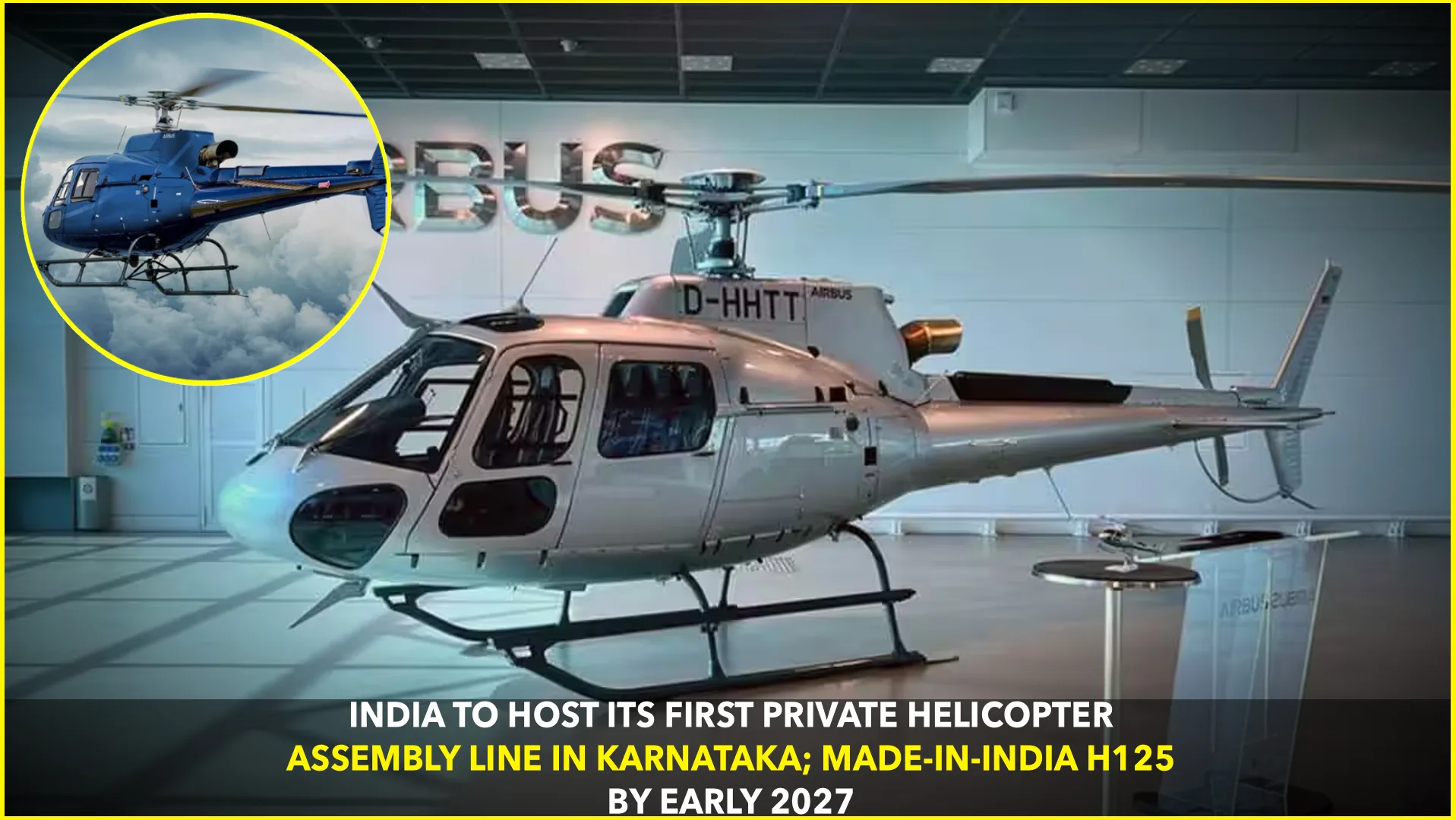Bengaluru / New Delhi, October 2025 — Tata Advanced Systems Limited (TASL), in partnership with Airbus, is set to establish India’s first private-sector helicopter Final Assembly Line (FAL) at Vemagal, in Karnataka’s Kolar district. The facility will assemble the Airbus H125, with the first “Made in India” helicopter expected to be delivered by early 2027 (Economic Times).
Why Karnataka?
Karnataka, home to Bengaluru’s aerospace hub, was selected after detailed evaluation. The state offers a strong talent pool and industrial infrastructure, making it an ideal location for India’s first rotorcraft assembly line (Times of India – Bengaluru Edition). The facility will be responsible for integration, systems testing, flight checks, and certification of the H125 helicopters.
The H125 Advantage
The Airbus H125 is one of the world’s most popular single-engine helicopters, known for its adaptability in roles ranging from tourism and air ambulance to policing and disaster relief. By building it locally, Airbus and TASL aim to make helicopters more affordable and accessible for India’s underdeveloped rotorcraft sector (Times of India – Business).
The facility is expected to start with a production rate of around 10 helicopters per year, with scope to expand based on demand.
Expanding into Defense
While the initial focus is on the civil variant, there are plans to assemble a military version, the H125M, at the same plant. This could potentially replace ageing platforms like the Cheetah and Chetak helicopters in high-altitude regions, especially along the Himalayas (Indian Express).
Strategic Significance
For Airbus, the Vemagal FAL will be the fourth such site globally, after France, Brazil, and the United States. India’s inclusion strengthens the global supply chain while reducing delivery timelines for Asian markets (Hindustan Times).
TASL already plays a major role in aerospace, including its work on the Airbus C295 military transport aircraft in Gujarat. The new facility highlights Tata’s growing footprint in both fixed-wing and rotary-wing aircraft manufacturing (The Hindu BusinessLine).
Boost to “Atmanirbhar Bharat”
The project aligns with the Indian government’s “Atmanirbhar Bharat” initiative, which seeks to increase local manufacturing and reduce dependency on imports. Airbus already sources over USD 1.4 billion annually from India, and the H125 programme could further strengthen domestic supply chains while generating highly skilled jobs (Business Standard).
Challenges Ahead
Industry experts point out that while assembling helicopters locally is a breakthrough, India will still rely on imported high-end components such as engines and gearboxes. Gradually increasing local content will be crucial for self-reliance. Training and technology transfer from Airbus to Indian engineers will also play a key role in meeting international certification standards (Mint).
Market Potential
India’s helicopter penetration remains low compared to global benchmarks. Experts believe the new FAL can help reduce operational costs and make helicopters viable for sectors like emergency medical services, oil and gas exploration, law enforcement, and tourism. This could eventually create a new market for helicopter services in India and boost exports across Asia (CNBC-TV18).
Looking Ahead
Construction of the assembly line is expected to begin in 2025, with trial operations starting in 2026. If all goes as planned, India will see its first “Made in India” H125 delivered by early 2027. This achievement could mark the beginning of India’s rise as a global hub for rotorcraft manufacturing, much like its growing status in fixed-wing aerospace.










